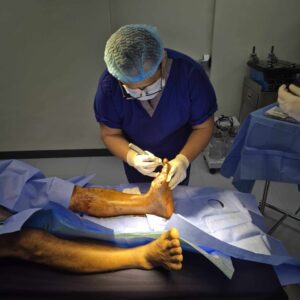Understanding Prolapse and Its Impact
Prolapse occurs when the muscles and tissues supporting organs such as the uterus, bladder, or rectum weaken, allowing these organs to shift downward from their normal positions. It is a condition that affects a significant number of women, particularly after childbirth, during menopause, or in cases of chronic straining from conditions like constipation. Common types of prolapse include uterine prolapse, bladder prolapse (cystocele), rectal prolapse (rectocele), and vaginal wall prolapse, each presenting with slightly different symptoms. Signs of prolapse can include a feeling of heaviness or pressure in the pelvic area, discomfort during daily activities, urinary or bowel changes, and, in some cases, visible protrusion of tissue. Beyond the physical discomfort, prolapse can also take an emotional toll, causing feelings of frustration, embarrassment, and anxiety about intimacy or everyday functioning. Understanding the condition thoroughly is the first step toward effective prolapse therapy. Awareness empowers individuals to seek timely care and take proactive steps toward long-term wellness.
Why Early Attention to Prolapse Therapy Matters
Addressing prolapse early is crucial to prevent the condition from worsening over time. Without proper intervention, prolapse can progress, leading to increased discomfort, difficulty performing daily activities, and a higher likelihood of requiring surgical solutions. Early prolapse therapy can help strengthen weakened muscles, reduce strain on affected organs, and improve overall quality of life. Professional evaluation by a pelvic health specialist or gynecologist ensures accurate diagnosis and personalized care plans. Common myths, such as prolapse being an inevitable part of aging, can delay treatment, making proactive care essential. Early intervention also provides a greater chance for non-surgical management options to be effective. Recognizing symptoms promptly allows for targeted strategies, minimizing the physical and emotional burden of the condition.
Non-Surgical Prolapse Therapy Options
Non-surgical treatments play a vital role in managing prolapse, particularly for individuals seeking conservative care. Pelvic floor exercises, often guided by a physical therapist, help strengthen the muscles that support pelvic organs, improving stability and reducing symptoms. Vaginal pessaries are another effective option, providing structural support to the pelvic organs and relieving pressure. These devices come in various sizes and must be fitted by a professional, with regular follow-ups to ensure proper use. Lifestyle changes, such as maintaining a healthy weight, avoiding heavy lifting, and managing chronic constipation, also contribute significantly to prolapse therapy. Physical therapy techniques, including biofeedback and targeted muscle training, can enhance pelvic strength and function. Combining these strategies often leads to measurable improvement and can delay or even prevent the need for surgical intervention.
Surgical Approaches to Prolapse Therapy
While non-surgical methods are effective for many individuals, surgery may be necessary for severe prolapse or when conservative treatments do not provide relief. Surgical options vary depending on the type and severity of prolapse, ranging from uterine or vaginal wall repair to more complex procedures like hysterectomy with pelvic reconstruction. Each procedure carries potential risks, including infection, bleeding, or recurrence of prolapse, making informed decision-making essential. Patients are encouraged to discuss the benefits, risks, and expected outcomes with their healthcare provider. Post-surgical recovery often includes pelvic rest, gradual reintroduction of physical activity, and continued pelvic floor exercises to maintain strength and prevent recurrence. Pain management and follow-up care are also important components of recovery. With proper preparation and care, surgery can significantly improve quality of life and restore pelvic function.
Holistic and Supportive Care for Prolapse
A holistic approach to prolapse therapy addresses both physical and emotional well-being. Nutrition plays a key role in tissue health, with diets rich in fiber, protein, and essential vitamins supporting healing and reducing strain from constipation. Gentle exercises such as yoga and mindful movement can improve pelvic stability and flexibility while enhancing overall body awareness. Alternative therapies, including acupuncture and biofeedback, may complement traditional treatments by promoting relaxation and improving muscle control. Mental health support is equally important, as prolapse can lead to stress, anxiety, or self-consciousness. Connecting with support groups or mental health professionals can help individuals navigate the emotional aspects of the condition. Integrating these approaches with medical treatment ensures a comprehensive prolapse therapy plan that addresses all aspects of well-being.
Daily Living Strategies for Long-Term Prolapse Management
Adapting daily routines can play a significant role in managing prolapse and preventing further strain on the pelvic floor. Simple strategies, such as using proper lifting techniques, avoiding prolonged standing, and pacing physical activity, can protect weakened muscles. Ergonomic adjustments at home and work, including supportive seating and proper posture, reduce stress on pelvic organs. Ongoing therapy and regular check-ins with healthcare professionals help track progress and address any changes in symptoms. Consistent practice of pelvic floor exercises and lifestyle adjustments enhances long-term outcomes. Building a supportive care network, including family, caregivers, and healthcare providers, ensures continuous encouragement and guidance. By incorporating these strategies, individuals can maintain independence, comfort, and confidence while managing prolapse effectively.
Frequently Asked Questions About Prolapse Therapy
Can prolapse heal without surgery?
Yes, many cases of prolapse can be managed effectively with non-surgical methods such as pelvic floor exercises, pessaries, and lifestyle adjustments. The success of these approaches depends on the severity of prolapse and consistency in therapy.
How effective are pelvic floor exercises in treating prolapse?
Pelvic floor exercises can significantly improve muscle strength and support for pelvic organs. With regular practice, they can reduce symptoms such as pressure, discomfort, and urinary changes, often delaying or eliminating the need for surgery.
What are the risks of leaving prolapse untreated?
Untreated prolapse can worsen over time, leading to increased discomfort, urinary or bowel complications, difficulty with daily activities, and potentially more invasive surgical interventions.
Is prolapse therapy different after childbirth or menopause?
Yes, therapy may be tailored based on life stage. Postpartum prolapse therapy often focuses on rebuilding pelvic strength, while therapy for menopause may address tissue changes due to reduced estrogen levels.
How can I tell if I need surgery for prolapse?
Surgery may be recommended if prolapse is severe, causes significant discomfort, or does not improve with non-surgical treatments. A healthcare professional will assess symptoms, severity, and overall health to determine the best approach.
Can prolapse return after treatment?
Prolapse can recur, particularly if pelvic floor muscles remain weak or lifestyle factors are not addressed. Ongoing therapy, exercises, and healthy habits help reduce the risk of recurrence.
Are there safe exercises I can do with prolapse?
Yes, pelvic floor exercises, gentle yoga, swimming, and low-impact activities are generally safe. High-impact exercises, heavy lifting, or activities causing excessive strain should be modified or avoided based on professional guidance.











